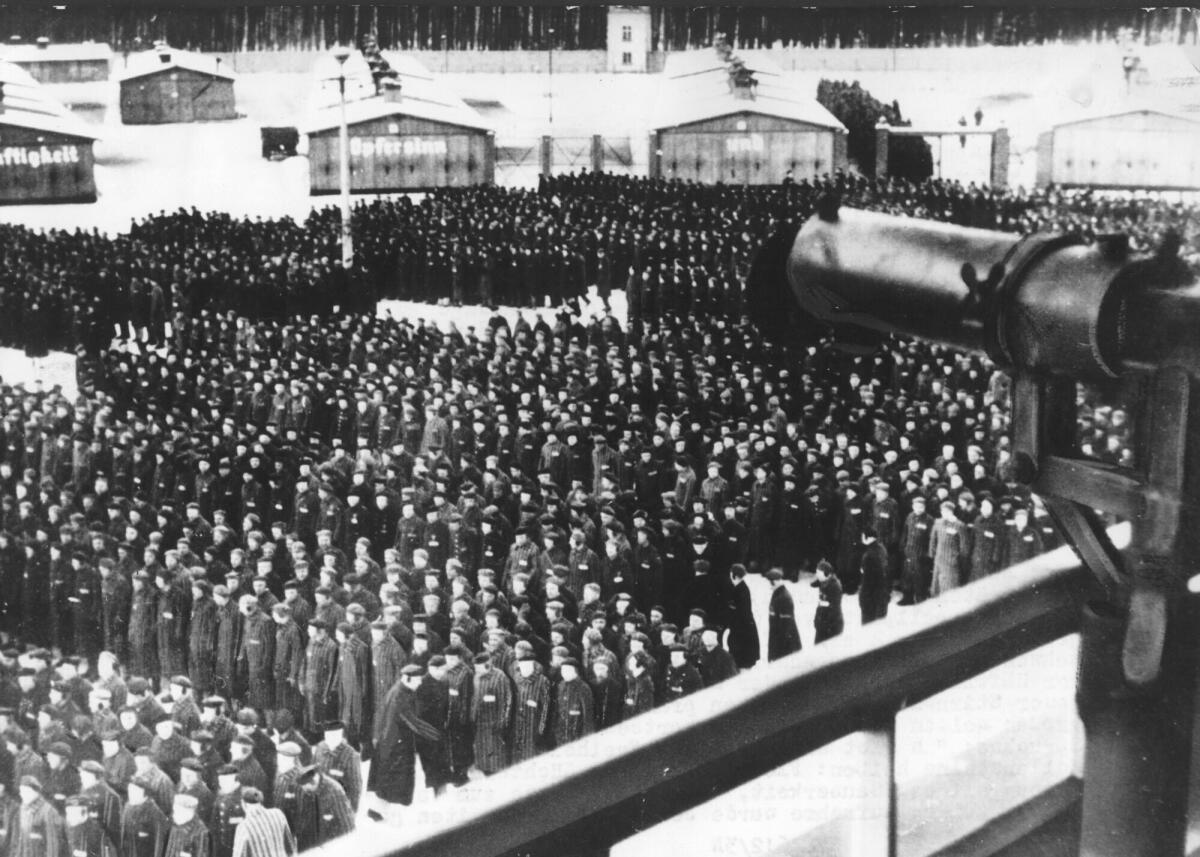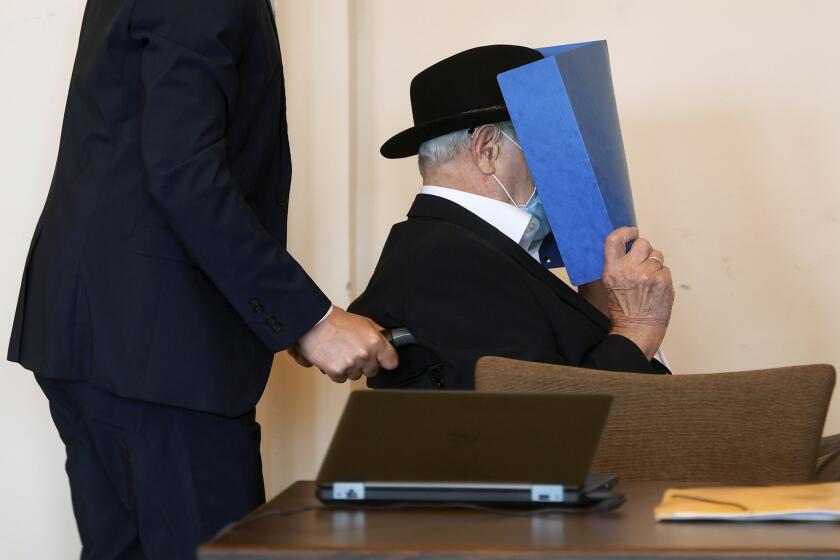100-year-old alleged former Nazi camp guard to stand trial in Germany

- Share via
BERLIN — A German court has set a trial date for a 100-year-old man who is charged with 3,518 counts of accessory to murder on allegations that he served as a Nazi SS guard at a concentration camp on the outskirts of Berlin during World War II.
A spokeswoman for the Neuruppin state court said Monday that the trial is set to begin in early October. The centenarian’s name wasn’t released, in line with German privacy laws.
The suspect is alleged to have worked at the Sachsenhausen camp between 1942 and 1945 as an enlisted member of the Nazi Party’s paramilitary wing.
Authorities say that, despite his advanced age, the suspect is considered fit enough to stand trial, though the number of hours per day that the court is in session may have to be limited.
“A medical evaluation confirms that he is fit to stand trial in a limited way,” court spokeswoman Iris le Claire said.
The Neuruppin office was handed the case in 2019 by the special federal prosecutors’ office in Ludwigsburg tasked with investigating Nazi-era war crimes. The state court in Neuruppin is based northwest of the town of Oranienburg, where Sachsenhausen was located.
A German court has convicted a 93-year-old former SS private of being an accessory to murder at the Stutthof concentration camp during World War II.
The defendant is said to live in the state of Brandenburg, outside Berlin, local media reported.
Sachsenhausen was established in 1936 just north of Berlin as the first new camp after Adolf Hitler gave the SS full control of the Nazi concentration camp system. It was intended to be a model facility and training camp for the labyrinthine network that the Nazis built across Germany, Austria and occupied territories.
More than 200,000 people were held there between 1936 and 1945. Tens of thousands of inmates died of starvation, disease, forced labor and other causes, as well as through medical experiments and systematic SS extermination operations including shootings, hangings and gassing.
Exact numbers of those killed vary, with upper estimates of some 100,000, though scholars suggest that figures of 40,000 to 50,000 are likely more accurate.
Demjanjuk, an Ohio autoworker whose U.S. citizenship was twice stripped, had steadfastly denied being a Nazi collaborator. He died in Germany in 2012.
In the camp’s early years, most prisoners were either political prisoners or criminal prisoners, but also included some Jehovah’s Witnesses and homosexuals. The first large group of Jewish prisoners was brought there in 1938 after the Night of Broken Glass, or Kristallnacht, an antisemitic pogrom.
During the war, Sachsenhausen was expanded to include Soviet prisoners of war — who were shot by the thousands — as well as others.
As in other camps, Jewish prisoners were singled out at Sachsenhausen for particularly harsh treatment, and most who remained alive by 1942 were sent to the Auschwitz death camp in Nazi-occupied Poland.
Sachsenhausen was liberated in April 1945 by the Soviets, who turned it into a brutal camp of their own.
Start your day right
Sign up for Essential California for the L.A. Times biggest news, features and recommendations in your inbox six days a week.
You may occasionally receive promotional content from the Los Angeles Times.
In a different case, a 96-year-old woman will go on trial in late September in the northern German town of Itzehoe. The woman, who allegedly worked during the war as the secretary for the SS commandant of the Stutthof concentration camp, was charged earlier this year with more than 10,000 counts of accessory to murder.
Her case and the charges against the 100-year-old suspect both rely on recent legal precedent in Germany establishing that anyone who helped a Nazi camp function can be prosecuted for accessory to the murders committed there.
More to Read
Sign up for Essential California
The most important California stories and recommendations in your inbox every morning.
You may occasionally receive promotional content from the Los Angeles Times.











